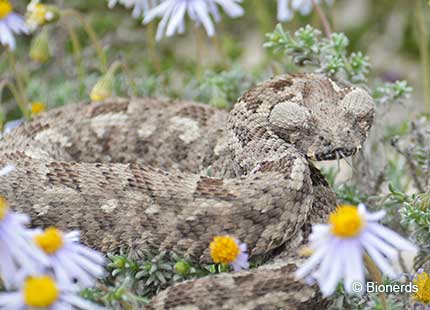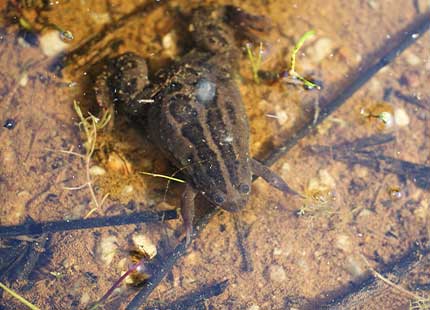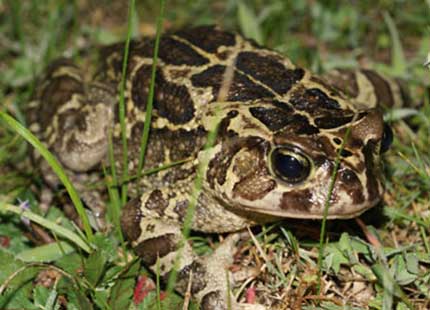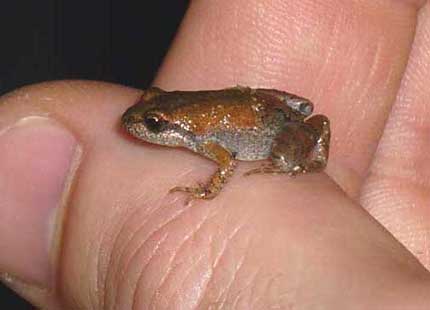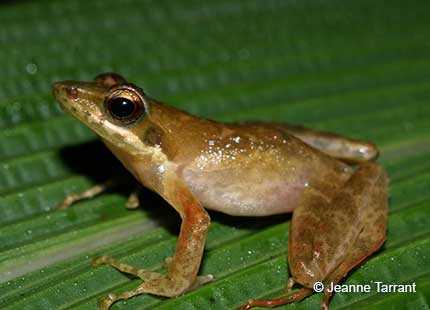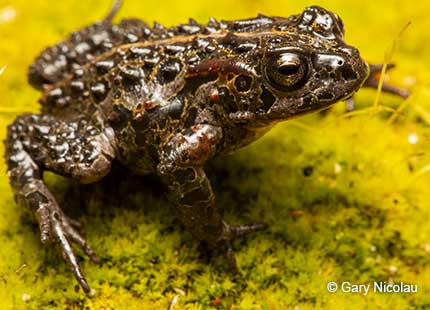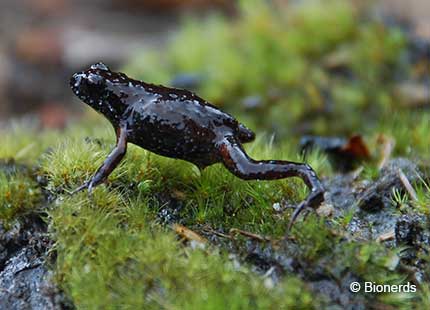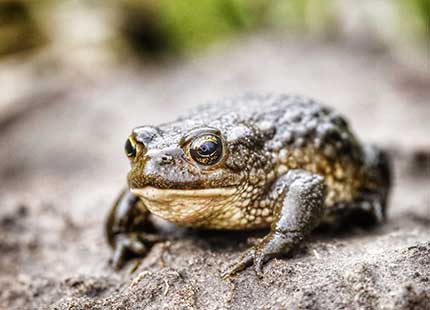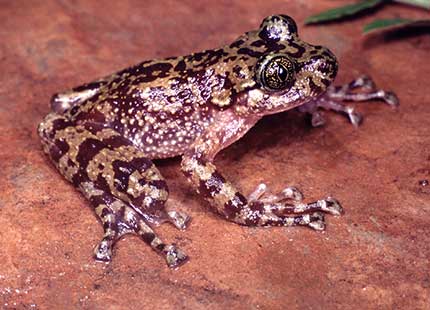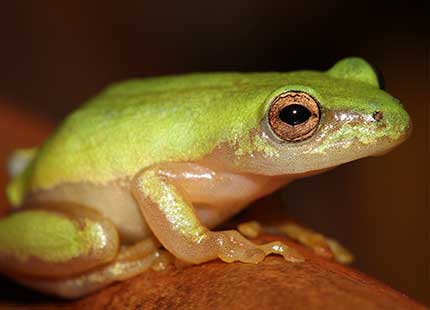threatened
amphibian
programme
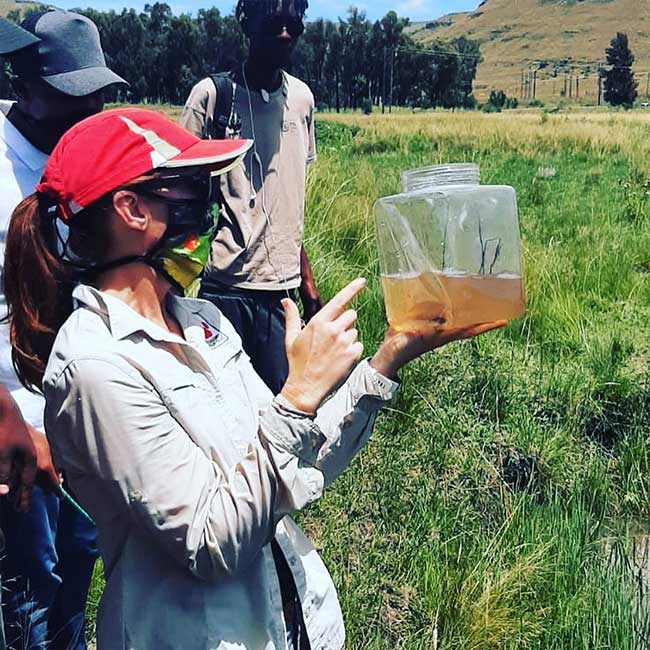
Saving amphibians
What are amphibians?
The word ‘amphibian’ means ‘double life’, referring to the lifescycle of these animals, which usually live part of their lives in water and part on land. As larvae, they have gills and live in water, grazing off algae. However, as adults, they have lungs and breathe air. Although most have simple lungs, amphibians also breathe through their thin, semi-permeable skin, which is why they need to stay moist. Amphibians have smooth, moist skin without scales, fur or feathers and their eggs are in jelly (unlike the shelled eggs of reptiles and birds). There are three types of amphibians: frogs and toads, newts and salamanders, and caecilians. There are more than 8,480 different types of amphibians around the world. Nearly 7,500 of these are frog species. Frogs and toads are the only type of amphibians found in southern Africa.
10
species
1
country
9
pack members

Why are amphibians and reptiles sometimes grouped together?
Despite being vastly unrelated, amphibians and reptiles are commonly referred to as herpetofauna, which means creeping animals. They have therefore been grouped under the field of study called Herpetology and are often subject to the same research studies and conservation initiatives.
Why should we conserve amphibians and reptiles?
Amphibians have been around for 350 million years and have successfully inhabited most parts of the world (except where it is too cold or isolated islands – frogs cannot fly or survive salty water to reach these!). Their dependence on freshwater means they are good indicator species. If frog numbers decline in an ecosystem where they would naturally occur, it is a sign that our most precious resource – freshwater – is in trouble. Healthy Frogs = Healthy Humans.
Amphibians are also a critical link in the food chain – they are a key ‘pest’ controller, as most frogs eat millions of insects. As such, they are important for safeguarding our food sources and controlling harmful insects like mosquitos and flies, protecting us from diseases and ensuring our food security. Amphibians are also an important food source for many other animals, including birds, reptiles, and even humans. The disappearance of this central link in ecosystems will have far-reaching negative consequences.
The glands in amphibian skin produce substances that protect frogs against disease and deter predators. Investigating the antimicrobial properties of amphibian skin glands has resulted in many medical and pharmaceutical applications.
Reptiles are also sensitive to their environment and play a role as indicator species. Some skin excretions, toxins, and venoms produced by reptiles are also used in human medicine. For example, certain types of snake venom are used to create anti-coagulants that work to treat victims of strokes and heart attacks.
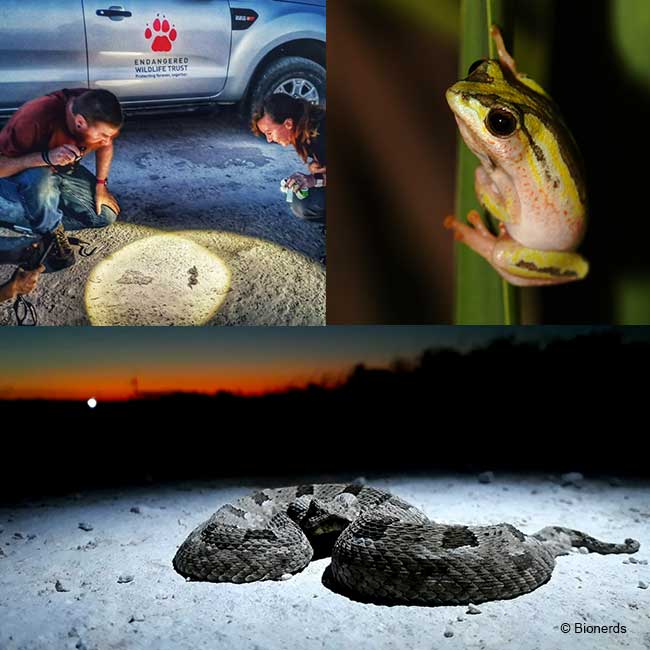
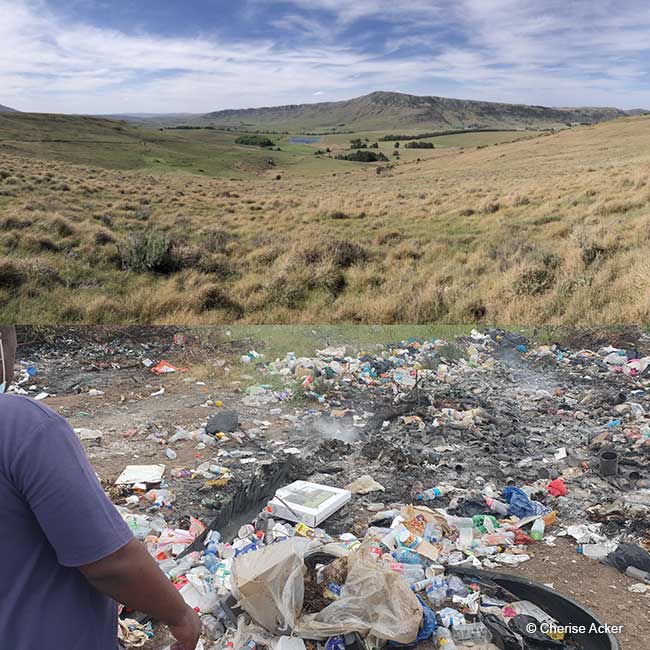
Threats to frogs and reptiles
Amphibians are the most threatened vertebrates on Earth, with 41% of species assessed by the IUCN Red List at risk of extinction. Furthermore, amphibian populations are declining on every continent where they are found. These declines make conserving amphibians a high priority. Of South Africa’s 134 frog species, almost 30% are threatened.
Frogs and reptiles in southern Africa are threatened by habitat destruction, alteration, and fragmentation, pollution, the pet trade, climate change, and the misunderstanding of humans.
Habitat loss
Frogs don’t only occur in wetlands and streams. Most species occur in our forest, grassland, and fynbos biomes. We must protect terrestrial (land) and aquatic environments to conserve various species and their different life stages. Not only will this protect frogs, but it will also provide important ecological services to humans.
Pollution and contamination
Chemicals from pesticides, heavy metals, acidification, and fertilisers, are responsible for amphibian declines. These chemicals can affect growth, tadpole development, and behaviour, leading to developmental and behavioural defects and weakening the immune system.
Climate change
Climate change poses a potentially serious threat to frogs in southern Africa, with predications of increasing aridity especially in the western part of the country. Because frogs are sensitive to changes in temperature and rainfall and can’t easily move to areas with better conditions, they can easily be eradicated from areas that are getting warmer. They are very dependent on seasonality, which plays a critical role in their reproduction, lifecycle, activity levels, and migration ability.
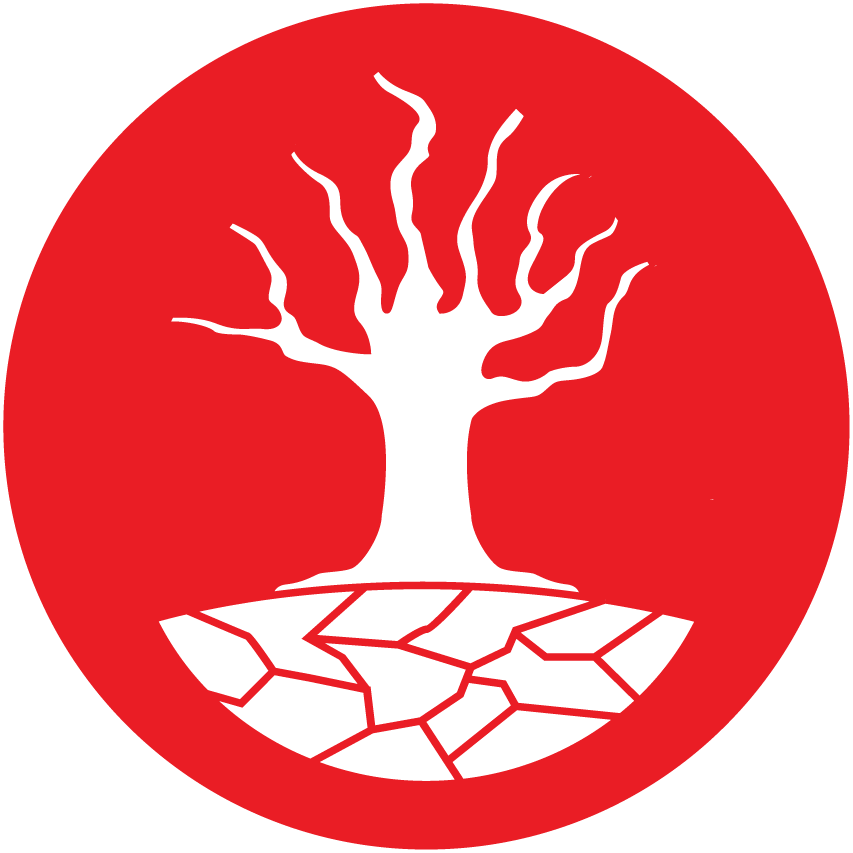
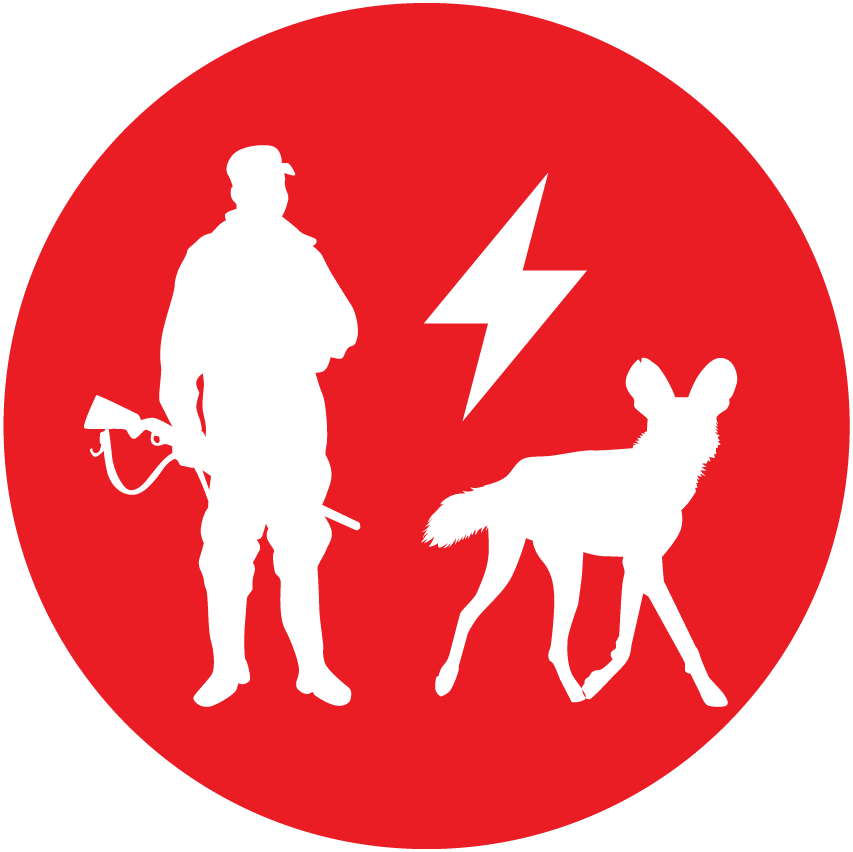
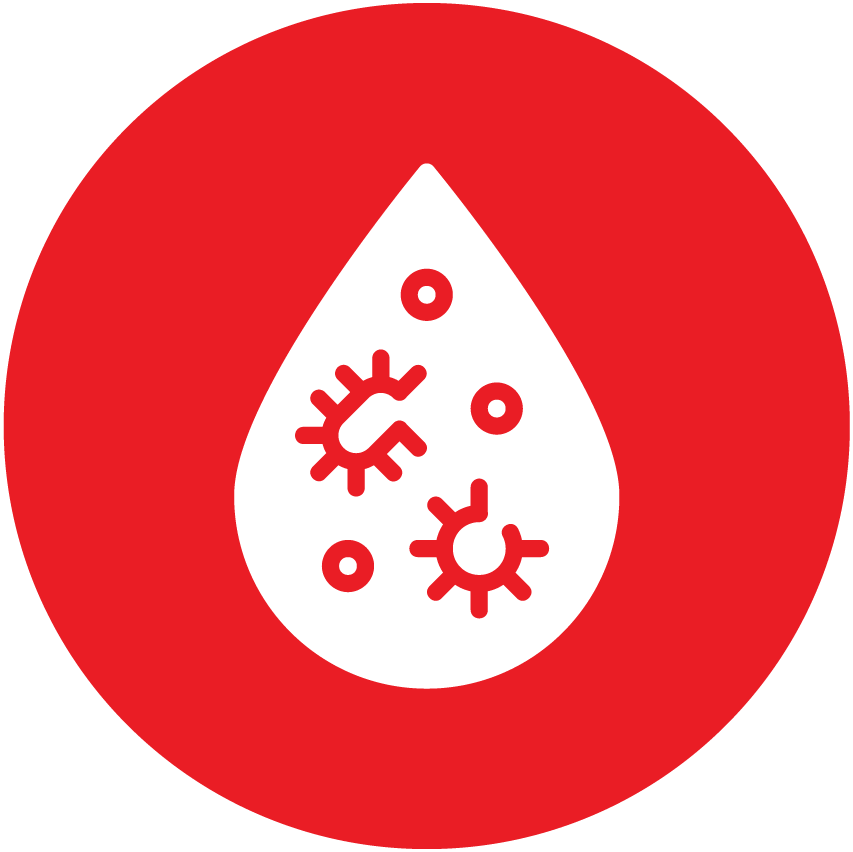

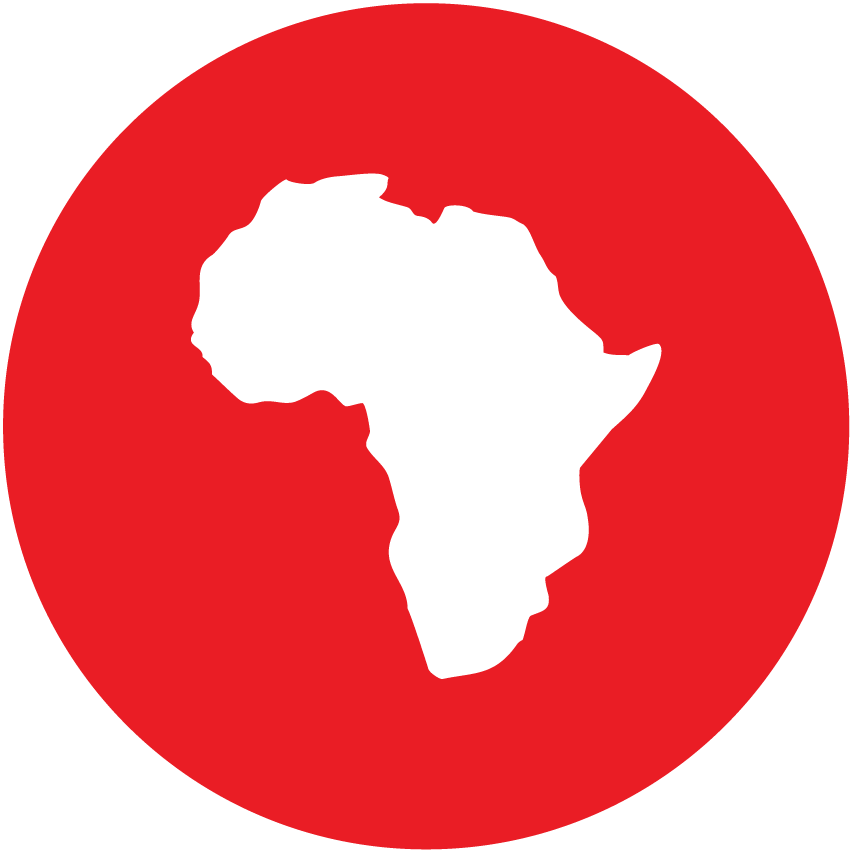
How we save
frogs and reptiles
The EWT’s Threatened Amphibian Programme is the only NGO-based programme dedicated to conserving threatened amphibians and reptiles in southern Africa. We focus on reducing threats to priority species, protecting important freshwater and terrestrial habitats, and increasing people’s awareness of the importance of these often under-prioritised animals. Our work is underpinned by research on frogs and reptiles and their habitats and builds on conservation evidence to support well-informed conservation action. We also work with the communities in these landscapes. In this way, we align with the EWT’s Strategic objectives: Saving species, conserving habitats, and benefitting people.
Our work would not be possible without our funders’ support and the wide range of partners we work with locally, nationally, and internationally. These partnerships range from other NGOs to research institutions to provincial conservation agencies. For example, we partner with the Amphibian Survival Alliance (ASA) and are a regional representative for the ASA Global Council, a regional chair for the IUCN Amphibian Specialist Group, and co-chair of the Habitat Protection Working Group.



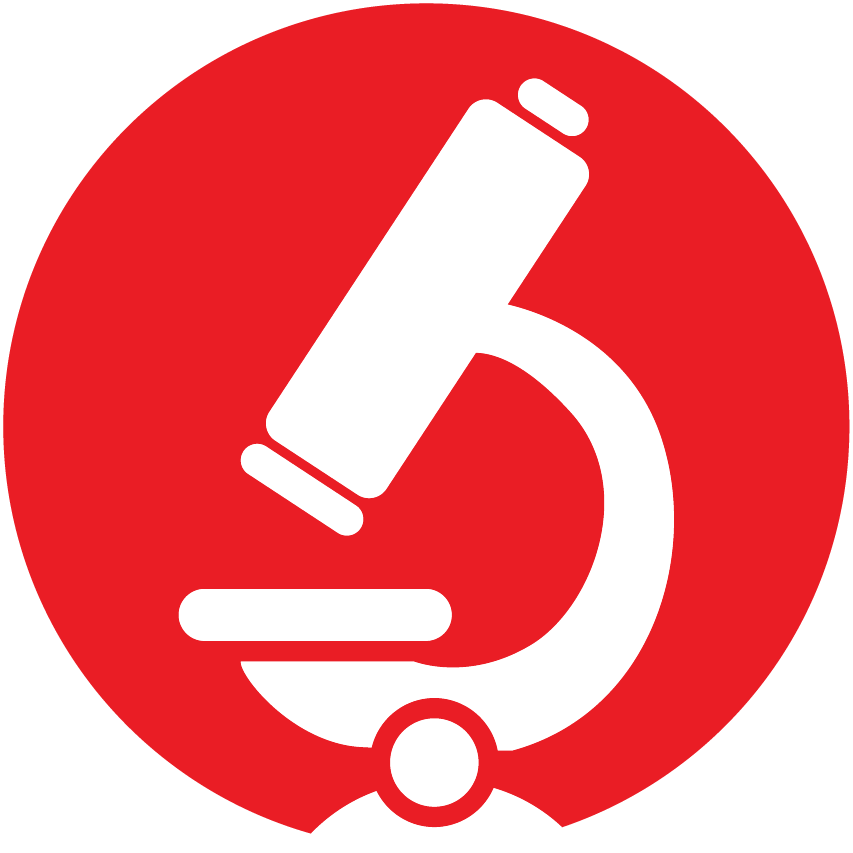


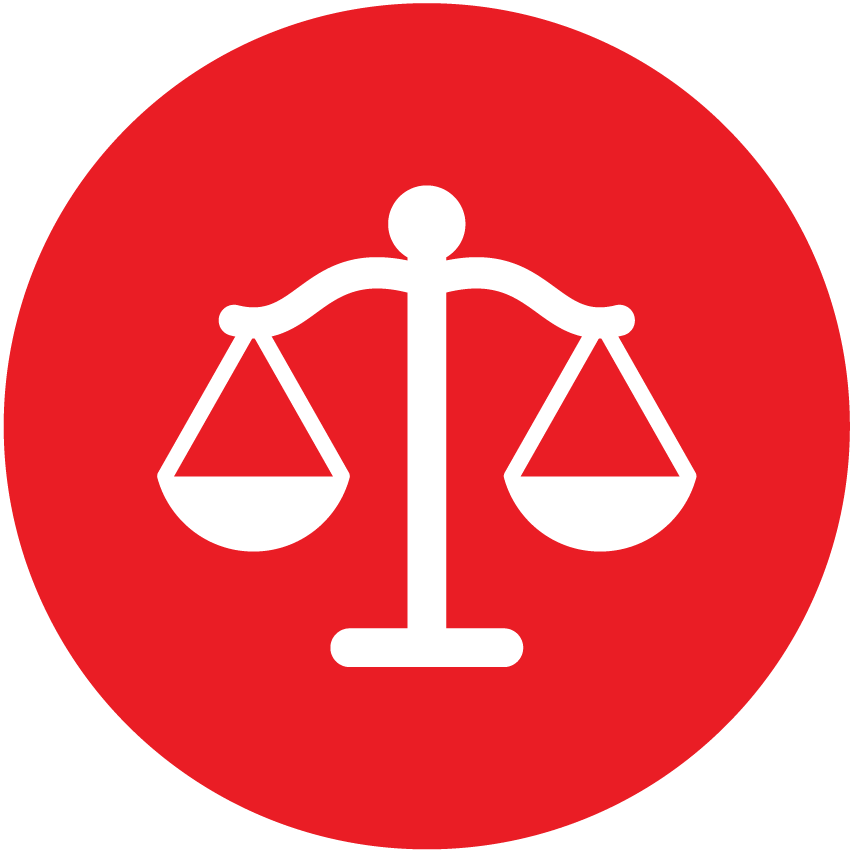
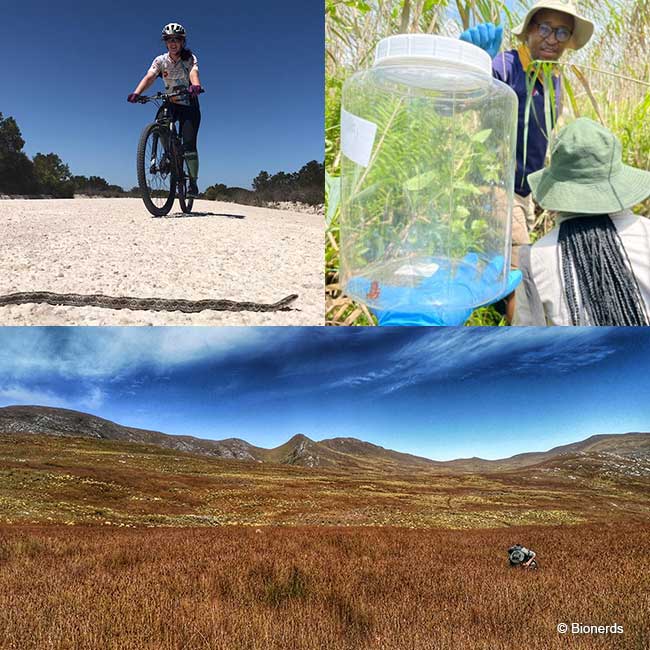
Our focal frog and reptile species

Monitoring species
We monitor target species and habitats using innovative technologies such as apps, acoustic recording devices, and camera traps. We run five projects across three provinces (the Eastern Cape, Western Cape, and KwaZulu-Natal), focusing on the following focal species:
Monitoring habitats
We conduct wetland and stream assessments and Ecological Goods and Services Quality Assessments (EGSQA) at project sites in KZN and Table Mountain to monitor the state of habitats. Local community members also use the EGSQA toolkit and app to capture data on the state of the natural resources based on a score ranging from 1 (bad condition) to 5 (excellent condition).
Protecting habitats
We are using the Biodiversity Stewardship process to legally protect approximately 28,000 hectares of priority habitats for frogs and reptiles across three provinces (KwaZulu-Natal, Eastern Cape and Western Cape) – with a focus on six threatened species that otherwise do not occur in many protected areas.
Managing and restoring habitats
We develop Environmental Management Plans for the sites we protect to address key threats and maintain habitat integrity. As such, we currently have five management plans under development.
Social change and outreach
We provide education and training and promote other awareness campaigns to educate the public on the threats facing amphibians and reptiles and why they must be conserved.
Frogs in the classroom
The Frogs in the Classroom series has been adapted for online learning, where students or educators can view the learning programme on YouTube. The lessons include frog Anatomy, Habitats, and Threats and Conservation and have been viewed over 450 times.
We use various tools to measure levels of change within communities resulting from our programme activities. For example, one way to measure knowledge gain is to administer assessments to participants before and after learning interventions are applied and compare these results. Overall, our learning programmes have shown an above-average transfer of knowledge.
Amphibian Learning Programme
An accredited course for school-leavers
Leap Day for Frogs
We host events and campaigns in February each year to celebrate Leap Day for Frogs. The campaigns aim to raise awareness about frogs, their threats, why they should be conserved, and what people can do to contribute to frog conservation.
A Tale of Two Leopards
In 2021 we started a partnership with the Cape Leopard Trust (CLT) on a project entitled “A Tale of two Leopards”, looking at the Endangered Western Leopard Toad (WLT) and the Cape Leopard, particularly in the Overberg region of the Western Cape. Leopards and WLTs find themselves in an increasingly urbanised environment and must navigate through this transformed landscape, including crossing roads. We launched the ‘Spotted on the Road’ campaign to raise awareness about wildlife on roads in the Overberg.
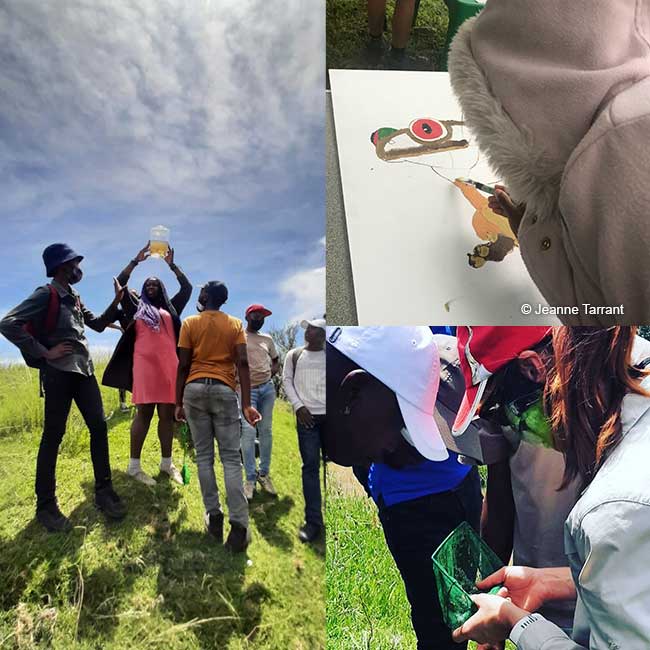
Stories of Success
for frogs
Improving the conservation status of the Pickersgill’s Reed Frog
Pickersgill’s Reed Frog (PRF) (Hyperolius pickersgilli) was considered Critically Endangered in 2010. This species has been down-listed to Endangered through a collaborative effort guided by a conservation action plan. Through ongoing surveys, we now know that the species occurs in 49 sites covering 1,660 hectares, a notable increase in the number of known sites since 2008, when the species was known from only ten places. We monitor several of these sites and have thousands of hours of sound recording to assess changes in population dynamics and to detect previously unknown populations. We also monitor the health of these wetland systems over time.
We are a Community Cinema partner of the Nature Environment Wildlife Filmmakers (NEWF), which has provided us with an excellent avenue to screen environmental documentaries at our Isipingo and Adam’s Mission sites in eThekwini – both home to the Endangered Pickersgill’s Reed Frog. In total, we have reached over 475 community members of all ages who have attended monthly screenings since 2019.
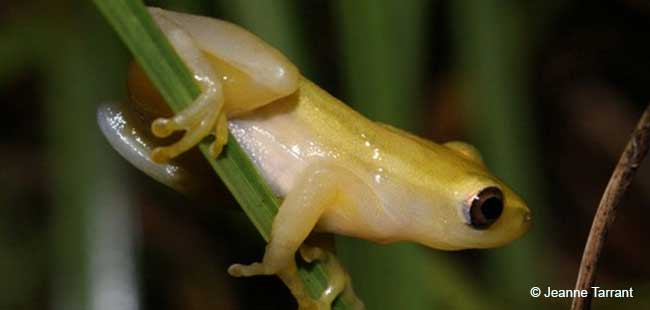
Table Mountain Ghost Frog
Our research project – linked to a PhD study – on the Critically Endangered Table Mountain Ghost Frog (Heleophryne rosei) and its habitat includes tadpole monitoring, water quality monitoring, flow monitoring, SASS assessments, in-stream, and riparian monitoring. This research thus far has given insights into threats to the frogs and provided clear management actions needed to reduce these threats while restoring water provision to the local community. Our habitat monitoring on Table Mountain establishes a good baseline for monitoring management interventions implemented and maintained by SANParks and Kirstenbosch. These include water abstraction, alien plant clearing, the installation of boardwalks in sensitive river areas, footpath management, and erosion control. Read more here and watch a short film about the project here.
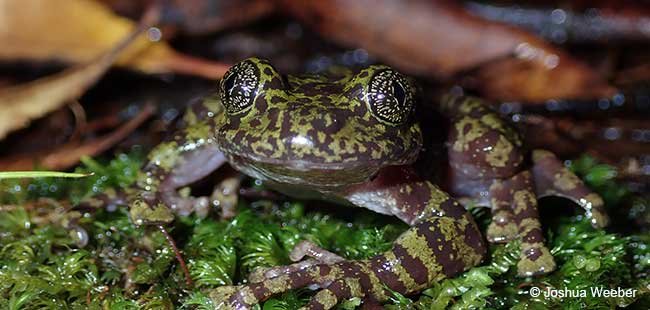
Managing and restoring habitats
We have developed five Environmental Management Plans for sites we are protecting. These plans address threats and maintain functional habitats. In KwaZulu-Natal, we hire local people at project sites to clear alien invasive plants where the Pickersgill’s Reed Frog is found. Between 2020 and 2021, the teams cleared over 270 hectares to restore wetland function.
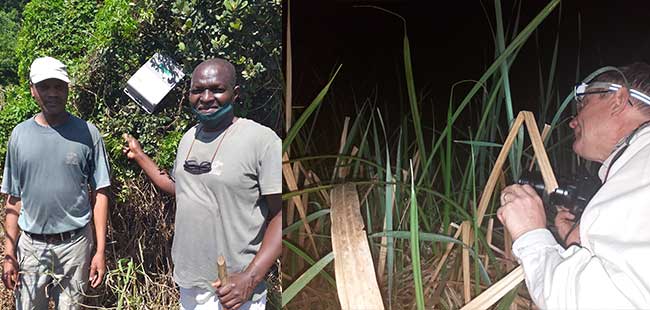
Understanding the breeding activities of the Kloof Frog
We have monitored the Kloof Frog (Natalobatrachus bonebergi) since 2013 using egg-clump counts. We developed a Survey 123 app to help us collect this information, giving us insights into breeding activity. During the COVID-19 pandemic, the team used camera traps to observe this unique breeding behaviour of the Kloof Frog. In this way, we recorded both males and females present from laying to hatching, and we are now testing this monitoring method with the Table Mountain Ghost Frog (Heleophryne rosei) and the Western Leopard Toad (Sclerophrys pantherina) in the Western Cape.
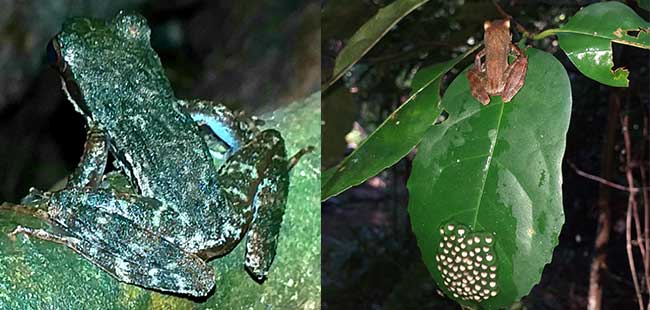
Monitoring habitats
The EWT and partners undertake wetland and stream assessments and Ecological Goods and Services Quality Assessments (EGSQA) at KZN project sites and on Table Mountain. These assessments monitor the ecological state of these important amphibian habitats. We have recorded an improvement in the quality of the natural resources and ecological function of the Adam’s Mission study site, where we have been clearing alien vegetation since 2018.
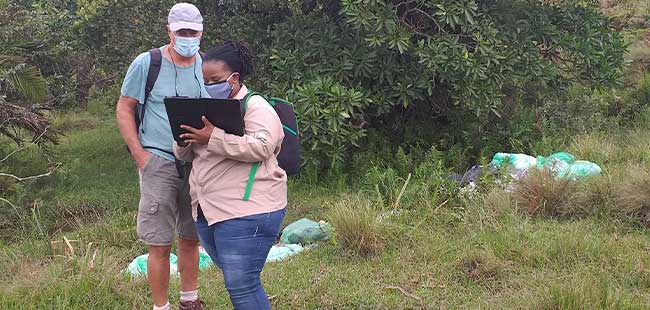
Spotted on the Road
The Tale of Two Leopards Spotted on the Road campaign worked with Cape Town-based artist Bryan Little to create reflective road signs of Western Leopard Toads (WLT) and Leopards in an innovative move to alert motorists to slow down for these, and other animals on the roads, especially at night. The signs were installed at five strategic locations in the Overberg, based on where WLT deaths have been recorded and where camera traps have confirmed Leopard movement. The locations vary between public and private land and tarred and dirt roads to maximise their reach.
The reflective road signs now join the interpretive Tale of Two Leopards information signboards to remind residents and travellers of the Overberg region’s amazing biodiversity. Please join us in our mission to protect it by making the roads of the Overberg safer for all wildlife!
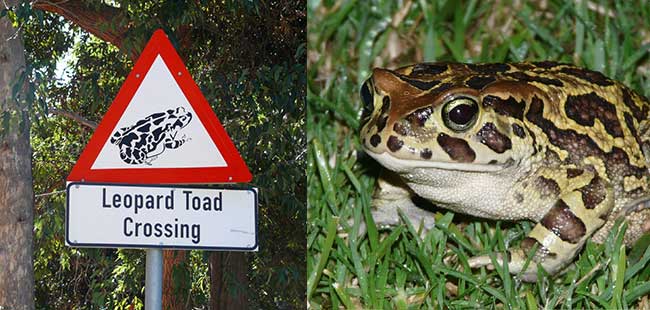
how you can help frogs and reptiles
- Become a Citizen Scientist – we need your help to document where our frogs are! You can do
this easily by checking out our iNaturalist projects here and here - Build a frog pond in your garden with indigenous plants around the edge
- Avoid mowing and grazing around ponds/dams
- Plant indigenous plants in your garden
- Learn more about frogs here
- Drive slowly on rainy nights
- Turn off the tap – don’t waste water
- Use environmentally-friendly products at home and in the garden
- Don’t keep frogs as pets
- Get involved in frog-related events
- Go frogging to learn more about your local frogs

